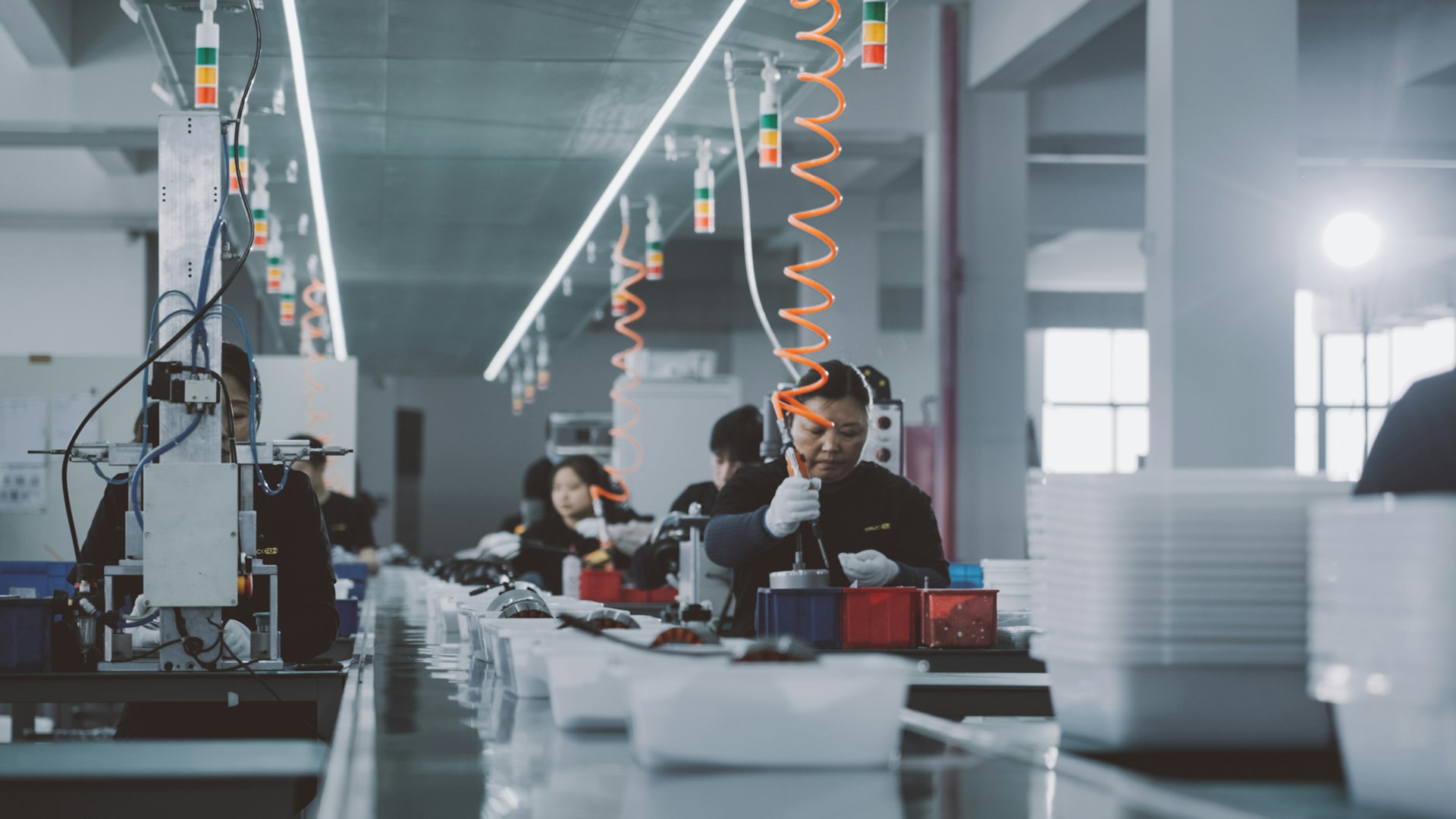The manufacturing industry is undergoing a transformation, moving from isolated industrial robots to collaborative machines. Also known as cobots, these are designed to operate alongside humans to boost workplace productivity and efficiency. These advanced technologies are increasingly establishing themselves as a foundational element in modern manufacturing, driven by their versatility and adaptability. Explore how this evolution is shaping the future.
The growing adoption of collaborative machines
Standard robots are engineered to do specific tasks in certain workspaces, while cobots are built to collaborate. These tools use advanced sensors, AI-driven motion control and adaptive programming to enhance manufacturing processes.
While automation is frequently perceived as a direct substitute for human labor, factories with intelligent manufacturing practices are using it to improve human processes and achieve competitive advantages. Renowned companies like Tesla, Agility Robotics, and Boston Dynamics are leading the revolution, investing in cobots in their factories.
Agility Robotics is establishing a factory in Oregon to create 10,000 robots annually to help companies deploy more intelligent, adaptable and cost-effective solutions to improve efficiency and work quality.
What is driving the rise of cobots in smart factories?

Various factors drive the growth of cobots in intelligent manufacturing companies.
Labor shortage
The sector experienced a substantial setback, losing approximately 1.4 million jobs during the COVID-19 pandemic. Although the pandemic has subsided, the industry faces a projected shortfall of 2.1 million skilled positions by 2030, primarily due to a persistent skills gap. Cobots are instrumental in addressing the workforce shortage and meeting the escalating demands of the logistics industry.
Precision assembly and finishing
Companies are adopting cobots to assist human workers with ergonomically challenging tasks, such as high-force exertions and working in awkward postures. These advanced technologies can also help prevent contact with hazardous items, machinery, and tools, to help reduce staff injury or absence.
For example, cobots can be programmed to accurately and consistently perform repetitive fastening — a crucial phase for assembling small electric components and intricate mechanical parts.
Quality control and inspection
Integrating AI-driven cobots into your manufacturing processes means investing in quality control and inspection measures. These tools are equipped with sensors that allow for predictive maintenance and real-time data analysis.
Compared to stationary automated systems, cobots can inspect for surface and sizing imperfections. Their streamlined deployment and continuous operation eliminate the limitations associated with human fatigue.
Complex handling
Cobots optimize end-of-line processes, enabling them to adapt to complex handling processes. Manual packaging, loading and unloading can be inefficient. Collaborative machines have state-of-the-art grippers and manipulation technology that allow them to move intricate components and adapt to various shapes and sizes.
Using cobots can support various packaging and loading techniques, resulting in improved quality of life and workflow efficiency.
Mobile collaborative machines in intelligent manufacturing
Automating individual tasks at a single point is a major leap in efficiency. However, the manufacturing industry is fundamentally about movement. The next frontier involves extending automation principles to the systems and machinery responsible for material transport across the facility.
More companies are deploying mobile collaborative robots to broaden the scope of automation within manufacturing environments, such as driverless forklifts. Also known as autonomous mobile robots (AMR), these utilize advanced sensors and features to collaborate with human employees. Many AMRs have swarm robotics — a feature that streamlines multiple AMRs for seamless interaction and data sharing. This aspect provides enhanced robotic coordination, ultimately maximizing the transportation of goods and reducing occasional operational mistakes.
Many collaborative robots have intuitive features, such as automatic loading and high-precision visual localization, that significantly reduce manual labor. Through advanced vision technology, cobots are particularly vital in industries that require precision operations.
How to navigate the challenges of this new era
As collaborative machines become more widespread, the conversation is shifting from engineering to strategy. You must address some challenges to position your organization as an industry leader. On the other hand, there are immense opportunities for gains in productivity, safety, and market leadership.
Workforce upskilling
As the manufacturing industry becomes more competitive and technology-driven, you must invest in teaching tools so employees can learn new technical skills, such as robotics, data analysis and digital literacy. Partnering with forward-thinking educational institutions ensures your workforce is equipped to adapt effectively within a rapidly evolving digital manufacturing environment.
New safety standards
Cobots necessitate the development of new safety standards and updates to existing ones. Standards like ISO 10218-1 and ISO 10218-2 now include a more comprehensive risk analysis, cybersecurity and specific requirements to ensure minimal risk to employees and collaborative applications. As collaborative robotics technologies continue to advance, the industry’s safety measures will evolve to address emerging challenges.
Return on investment calculation
The return on investment for cobots is more complex than a simple labor cost calculation. The true value stems from factors like fewer defects, increased production and higher uptime — qualities that are challenging to quantify. However, you can get a baseline estimate by measuring increased throughput, labor redeployment value, production agility and workplace safety.
Retaining the human touch on intelligent manufacturing
As manufacturing companies adapt to trends, the role of human workers in ensuring sustainability will continue to grow. The rise of collaborative robots will augment human workers’ capabilities rather than replace them, creating a safer and more efficient manufacturing environment. When humans and machines collaborate, the industry can anticipate an innovative and resilient sector.

Jack Shaw is a Senior Writer and Editor at Modded.com with 6+ years of experience writing for the men’s lifestyle niche. He has covered everything from cars to grooming to men’s health, and much more.
TNGlobal INSIDER publishes contributions relevant to entrepreneurship and innovation. You may submit your own original or published contributions subject to editorial discretion.
Image credit: Unsplash
8 Hidden costs to consider before implementing AI in healthcare

